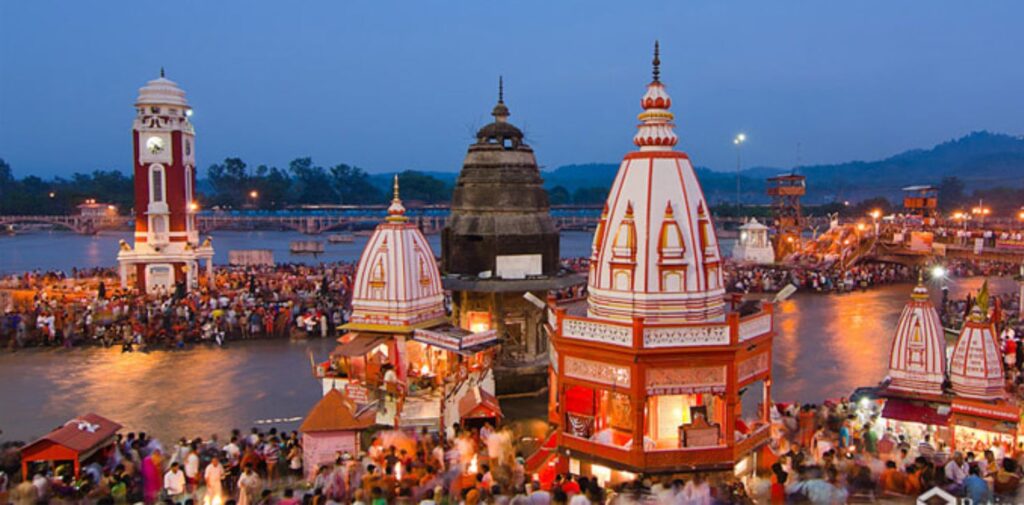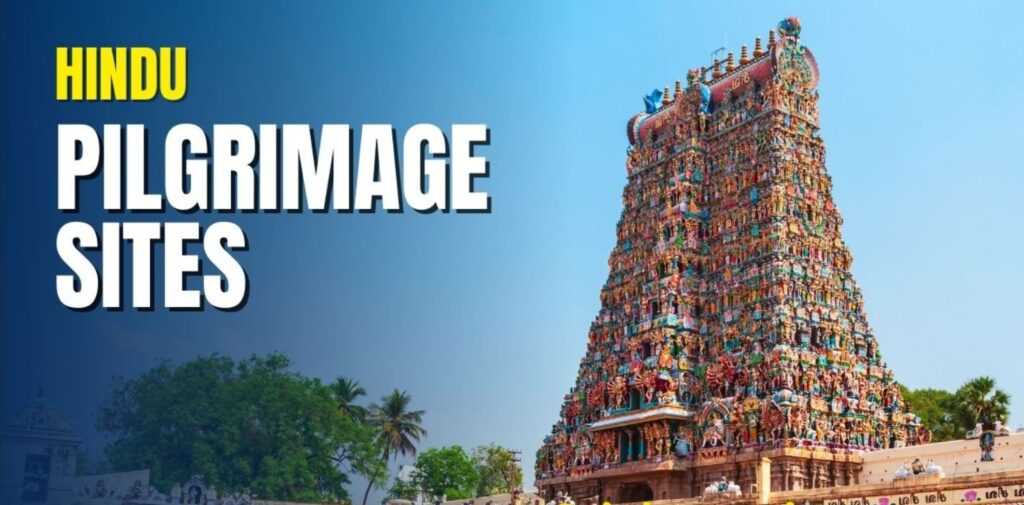In Hinduism, the concept of pilgrimage is not just about travel or visiting holy places. It is a deeply spiritual practice, a journey of the soul towards purification and self-realization. Pilgrimage in Hinduism is seen as an opportunity to connect with the divine, to seek blessings, and to grow spiritually. The journey to sacred sites, often referred to as “tirthas,” holds immense significance in Hindu belief and culture. These tirthas are not just physical locations, but sacred spaces where the divine energy is believed to be concentrated, offering devotees a chance to cleanse themselves of past sins and earn spiritual merit.
In this article, we will explore the spiritual significance of pilgrimage in Hinduism, the sacred sites that are visited by millions of devotees every year, and how these pilgrimages play a crucial role in a person’s spiritual life.
The Concept of Pilgrimage in Hinduism
Pilgrimage in Hinduism, known as “Tirtha Yatra,” is an ancient practice that involves visiting holy places associated with gods, saints, and sages. The term “tirtha” means a crossing or ford, referring to a place that helps one cross the cycle of birth and death (samsara) and reach liberation (moksha). These holy sites are believed to be places where the divine presence is especially strong, and by visiting them, pilgrims can purify themselves and receive blessings from the gods.
For Hindus, pilgrimage is more than just a ritualistic journey. It is an essential part of spiritual practice that allows individuals to deepen their devotion, seek guidance, and grow closer to the divine. It is also a way to seek forgiveness for past mistakes, alleviate suffering, and gain the strength to overcome life’s challenges.

Spiritual Significance of Pilgrimage
- Purification of the Mind and Soul: One of the core reasons Hindus undertake pilgrimages is to purify themselves. The act of visiting sacred places is seen as a way to wash away negative karmas (actions) accumulated over previous lives or during one’s current life. By performing rituals and prayers at these sites, devotees believe they can remove obstacles in their spiritual journey, cleanse their hearts, and free themselves from the bonds of material desires.
- Devotion and Connection with the Divine: Pilgrimage is a form of devotion (bhakti) that allows the devotee to connect with the divine on a personal level. Many Hindu temples and sacred sites are dedicated to specific deities such as Lord Vishnu, Shiva, Durga, or Krishna. By visiting these temples, pilgrims express their love and reverence for the divine, seeking blessings, protection, and guidance in their lives. The sacred sites provide an environment of peace and reflection where individuals can focus on their devotion without the distractions of daily life.
- Spiritual Merit and Blessings: In Hinduism, spiritual merit (punya) is believed to be accumulated through virtuous actions, including pilgrimage. It is thought that by visiting holy places, a devotee earns Punya, which can lead to good karma in this life and better prospects in the next. The belief is that this merit not only purifies the individual but also benefits their family, community, and society as a whole.
- Community and Collective Worship: Pilgrimages in Hinduism are often communal events, where people come together to worship, share their experiences, and strengthen their sense of community. These journeys allow people from different walks of life to unite in devotion to the divine, fostering a sense of shared purpose and spiritual camaraderie. The collective worship and rituals performed at sacred sites are believed to amplify the spiritual energy, creating an environment conducive to deep spiritual growth.

Famous Pilgrimage Sites in Hinduism
Hinduism has a vast number of sacred places scattered across India and beyond. These places are often associated with legends, mythology, and historical significance. Here are some of the most important pilgrimage sites in Hinduism:
- Varanasi (Kashi): Varanasi, also known as Kashi, is one of the oldest living cities in the world and holds a place of supreme importance in Hinduism. Situated on the banks of the river Ganges, Varanasi is dedicated to Lord Shiva, the destroyer and transformer. Pilgrims come to Varanasi to bathe in the holy waters of the Ganges, which are believed to purify the soul and wash away sins. It is also a place where many choose to be cremated, as it is believed that dying here grants liberation (moksha).
- Tirupati: Tirupati, located in the state of Andhra Pradesh, is home to the famous Sri Venkateswara Temple, one of the richest and most visited pilgrimage sites in the world. The temple is dedicated to Lord Venkateswara, an incarnation of Lord Vishnu. Pilgrims visit Tirupati to seek the blessings of Lord Venkateswara for prosperity, health, and success. The temple’s rituals and the sacred mountain it is located on make it a deeply spiritual destination.
- Rishikesh and Haridwar: Both Rishikesh and Haridwar are important pilgrimage sites for devotees of Lord Shiva and the river Ganges. Rishikesh is known as the “Yoga Capital of the World” and attracts those seeking spiritual growth through meditation and yoga. Haridwar, where the Ganges first descends from the mountains, is another major pilgrimage destination, especially for those who wish to take a dip in the holy river to purify themselves. The Ganga Aarti, a nightly ritual on the ghats of Haridwar, is a mesmerizing sight for devotees.
- Amarnath: The Amarnath Cave in Jammu and Kashmir is another sacred site, dedicated to Lord Shiva. Pilgrims travel to this remote location, often enduring harsh weather and challenging terrain, to witness the natural ice Shiva Lingam that forms inside the cave each year. This pilgrimage, undertaken during the summer months, is considered an act of great devotion and endurance.
- Dwarka: Dwarka, located on the western coast of India, is the ancient kingdom of Lord Krishna. The Dwarkadhish Temple, dedicated to Krishna, attracts millions of pilgrims each year. According to Hindu mythology, it is believed that Dwarka was once a golden city ruled by Krishna, and the site remains a significant destination for those seeking to honour the deity.
- Badrinath: Badrinath is one of the four Char Dham pilgrimage sites in the Indian Himalayas. It is dedicated to Lord Vishnu and is considered one of the most important spiritual destinations for Hindus. Pilgrims visit Badrinath to seek the blessings of Lord Vishnu and to experience the spiritual power of the Himalayas.
- Kedarnath: Another Char Dham site, Kedarnath is a temple dedicated to Lord Shiva. It is situated at an altitude of 3,583 meters in the Himalayan region. Pilgrims trek through challenging mountainous terrain to reach the temple, which is said to be one of the 12 Jyotirlingas (sacred shrines of Lord Shiva).

The Rituals and Practices of Pilgrimage
Pilgrimage rituals in Hinduism vary depending on the location, the deity being worshipped, and the specific traditions of the region. However, some common practices are followed:
- Bathing in Sacred Waters: Many pilgrims take a ritual bath in the holy rivers or ponds at these sacred sites to purify themselves spiritually. The Ganges, Yamuna, and other rivers are considered to be particularly sacred.
- Offering Prayers and Worship: Pilgrims offer prayers, chant mantras, and perform rituals at temples to seek divine blessings. Offerings of flowers, fruits, incense, and sweets are common.
- Parikrama (Circumambulation): Pilgrims often walk around the temple or sacred site in a clockwise direction, a practice known as parikrama. This is considered a symbolic gesture of respect and devotion to the deity.
- Meditation and Reflection: Many pilgrims take time to meditate, reflect on their lives, and seek inner peace during their visit to a sacred site.
Conclusion
In Hinduism, pilgrimage is much more than a religious obligation—it is a profound spiritual experience. The sacred journey allows individuals to connect with the divine, purify their minds and souls, and gain spiritual merit. Whether it is a grand temple like Tirupati or a remote shrine like Amarnath, these sacred sites serve as gateways to spiritual enlightenment. Pilgrimage in Hinduism reinforces the importance of devotion, self-reflection, and community worship, making it a cornerstone of spiritual life. Through these sacred travels, devotees renew their faith and embark on a journey that transcends the physical world, bringing them closer to the divine presence and the ultimate goal of liberation.




